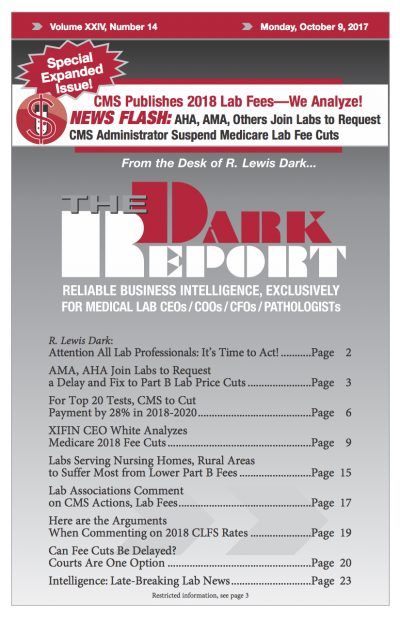ALL LABORATORY PROFESSIONALS AND pathologists are encouraged to submit comments to CMS before the Oct. 23, as well as send letters to their elected officials in Congress to urge both to delay and to fix the market price study and revise the proposed Clinical Laboratory Fee Schedule for 2018. Beneficiaries Will Lose Out Among the …
Here Are the Arguments When Commenting on 2018 CLFS Rates Read More »
To access this post, you must purchase The Dark Report.


